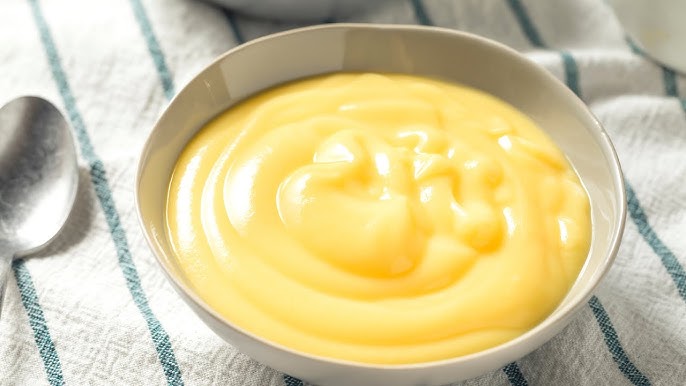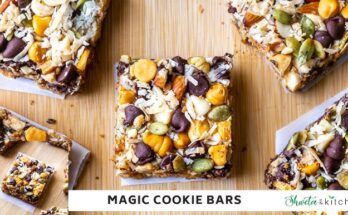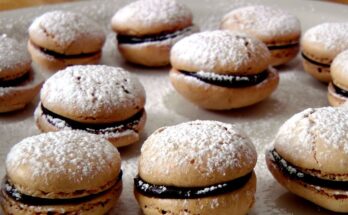Egg Custard Recipe: Egg custard is one of those timeless desserts that never goes out of style. It’s rich, creamy, lightly sweetened, and packed with nostalgic flavor that takes many of us back to childhood. Whether you’re serving it up warm on a chilly night or chilled on a sunny afternoon, it always hits the spot. The best part? It’s incredibly simple to make from scratch with just a few basic ingredients you probably already have in your kitchen.
Historically, egg custard has roots in various cultures—from French crème brûlée to Chinese steamed egg custard, to the British flan. It’s been a go-to comfort food across centuries and continents. What sets it apart is the smooth, silky texture and gentle flavor that can be customized with vanilla, nutmeg, cinnamon, or even citrus zest.
This guide will walk you through each step to making a classic baked egg custard, sharing some insider tips and tricks so you nail it every time. Whether you’re a seasoned home baker or a first-timer in the kitchen, you’ll be amazed at how foolproof this dessert can be.
Ingredients Needed for Egg Custard
Before diving into the cooking process, let’s talk about the heart of this dish: the ingredients. The beauty of egg custard lies in its simplicity. You don’t need anything fancy—just wholesome pantry staples.
Basic Ingredients:
- 4 large eggs
- 2 cups whole milk (for the creamiest texture)
- 1/2 cup granulated sugar
- 1 tsp pure vanilla extract
- A pinch of salt
- Ground nutmeg (for sprinkling on top)
Optional Add-ins:
- A cinnamon stick (infused in the milk)
- Lemon or orange zest
- A splash of cream for extra richness
- Maple syrup or honey instead of sugar
The ingredients are highly customizable based on dietary needs or flavor preferences. Some people even add a bit of cornstarch for a thicker consistency, though traditionalists may frown at that shortcut.
Tools and Equipment You’ll Need
A smooth egg custard isn’t just about ingredients—it’s also about technique. And having the right tools will set you up for success. Here’s what you’ll need:
Kitchen Tools:
- Mixing bowls
- Whisk
- Measuring cups and spoons
- Saucepan
- Fine-mesh strainer or sieve
- Baking dish or ramekins
- Roasting pan (for water bath)
- Oven thermometer (optional but helpful)
Why These Tools Matter: A whisk helps to beat the eggs just enough without over-aerating them. A fine-mesh strainer ensures a velvety-smooth custard by catching any bits of cooked egg or shell. The water bath, or “bain-marie,” helps regulate temperature, cooking the custard gently and evenly without curdling it. You’ll thank yourself later for not skipping that step.
Preparing Your Ingredients
Alright, let’s get hands-on. The preparation process is just as crucial as the baking. Start by bringing your eggs to room temperature—this makes them easier to mix with the milk and sugar without forming lumps.
Eggs: Crack four large eggs into a bowl and beat them lightly. You’re not trying to whip air into them—just break up the yolks and mix everything evenly.
Milk: Whole milk is best here. Pour it into a saucepan and gently warm it over medium heat. Don’t let it boil! You’re aiming for a warm bath-like temperature. This helps dissolve the sugar better and tempers the eggs without cooking them instantly.
Sugar: Whisk the sugar into the eggs gradually. Doing this slowly allows the sugar to dissolve and blend smoothly without clumping or scrambling the eggs.
Vanilla & Extras: Add the vanilla extract to the milk just before combining it with the egg mixture. If you’re using cinnamon sticks or citrus zest, infuse them into the milk as it warms up, then strain them out before adding to the eggs.
Once everything is prepped, you’re ready for the real magic to happen.
Step-by-Step Instructions for Making Egg Custard
Let’s break it down into easy-to-follow steps so your custard turns out perfect every time.
Step 1 – Preheat Your Oven
Preheat your oven to 325°F (163°C). Custard needs gentle, even heat, so make sure your oven is fully preheated before you start baking. Place a roasting pan or deep baking dish on the middle rack—this is where your ramekins will sit in a water bath later.
Step 2 – Mix Eggs and Sugar
In a large mixing bowl, whisk together the eggs and sugar until well blended but not frothy. Over-mixing can introduce air bubbles, which might ruin that smooth custard texture. Add a pinch of salt to balance the sweetness.
Step 3 – Heat the Milk
Warm the milk over medium heat until just steaming. Remove from heat and slowly whisk it into the egg-sugar mixture. Do this gradually, stirring constantly to avoid scrambling the eggs—a process known as tempering.
Step 4 – Combine and Strain
Once the milk is fully incorporated, pour the mixture through a fine-mesh strainer into another bowl or large measuring cup. This step ensures any eggy bits or zest are left behind, giving you a silkier result.
Step 5 – Bake to Perfection
Pour the custard mixture into ramekins or a baking dish. Place them in your preheated roasting pan and carefully pour hot water around the outside until it reaches halfway up the sides of your ramekins.
Sprinkle a little ground nutmeg on top for that signature flavor. Bake for 40–50 minutes, or until the custard is set but still slightly jiggly in the center.
To test, insert a knife about an inch from the center—it should come out clean. Remove from the oven and let the custard cool in the water bath for 10–15 minutes before transferring to the fridge.
Tips for the Perfect Custard
Making custard might seem easy, but it’s surprisingly delicate. Here are some key tips that can take your egg custard from good to great:
1. Don’t Overheat the Milk: If your milk boils, it can curdle your custard when added to the eggs. Keep it warm, not hot—just until it’s steaming.
2. Temper the Eggs Slowly: Pour the warm milk into the eggs slowly and whisk constantly. This gradual process prevents the eggs from cooking too quickly and forming lumps.
3. Always Strain the Mixture: Even if you’re confident your mix is smooth, always strain it. This removes any bits of cooked egg or undissolved sugar, ensuring that creamy, silky finish we all love.
4. Use a Water Bath (Bain-Marie): This technique is non-negotiable. Baking the custard in a hot water bath provides gentle, even heat. It protects the custard from overbaking or cracking and helps it set slowly and uniformly.
5. Keep an Eye on the Bake: Check your custard around the 35-minute mark. You want it to be just set on the edges with a slight jiggle in the middle. Overbaking leads to a rubbery texture and unsightly cracks.
6. Chill Before Serving: Letting your custard chill in the fridge for at least two hours helps it fully set and enhances the flavor. It also allows the nutmeg or added flavors to infuse deeply.
7. Flavor It Your Way: While vanilla and nutmeg are classic, feel free to add in lemon zest for brightness, cardamom for warmth, or espresso powder for a rich twist. The base is so neutral, it can handle all sorts of experiments.
Serving Suggestions
Egg custard is a dessert that feels elegant but is wonderfully unpretentious. Here are some ways to present and enjoy it:
1. Serve It Cold or Warm: Traditionally, egg custard is served chilled, but don’t knock warm custard—it’s comforting and smooth, especially on a winter night.
2. Garnish Creatively: Top it with fresh berries, whipped cream, a dusting of cinnamon, or even a caramel drizzle. A small mint leaf can also make it pop visually.
3. Pair It with Something Crunchy: Serve with a biscuit, cookie, or shortbread on the side. The texture contrast makes for a delightful mouthfeel.
4. Make it Fancy: Pour your custard into elegant glass ramekins or vintage teacups. Sprinkle a bit of burnt sugar on top if you’re going for a crème brûlée vibe without the full torching process.
5. Use it as a Base: Egg custard can double as a filling for pies or tarts. Pour it into a pre-baked pastry shell and bake until just set. Add sliced bananas or peaches to the bottom for a fruity surprise.
Whether you’re dishing it up at a dinner party or enjoying a spoonful in front of the TV, egg custard is a dessert that always feels a little bit special.
Storage and Reheating
Custard is best fresh, but if you’ve made a big batch or want to prep ahead, here’s how to store and reheat it properly.
Storage Tips:
- Refrigerate Promptly: Once the custard has cooled to room temperature, cover it with plastic wrap (press it directly onto the surface to prevent skin from forming) and store in the fridge.
- Use Within 3 Days: For the best taste and texture, enjoy your custard within 2-3 days.
- Keep It Airtight: Store in an airtight container or cover your ramekins tightly to avoid absorbing any fridge odors.
Reheating Instructions:
- Microwave: Heat in 10-second bursts, stirring between each round to avoid hot spots. Be cautious—overheating will cause the eggs to curdle.
- Stovetop: Reheat gently in a saucepan over low heat, stirring constantly.
- Serve Cold: Honestly, custard tastes amazing straight from the fridge. Just give it a stir if it looks a little separated.
Avoid freezing custard—it doesn’t thaw well and the texture becomes grainy. If you need to prep far in advance, it’s better to mix the ingredients and bake fresh when needed.
Nutritional Information
Let’s take a quick look at what’s inside your delicious egg custard. This is based on a standard serving (about 1/2 cup):
| Nutrient | Amount per Serving |
|---|---|
| Calories | 180-200 |
| Protein | 6-7 grams |
| Fat | 10-12 grams |
| Carbohydrates | 18-20 grams |
| Sugar | 15-17 grams |
| Calcium | ~150 mg |
Healthy Swaps:
- Use low-fat milk or a mix of milk and cream for different calorie levels.
- Replace sugar with stevia or monk fruit sweetener for a lower glycemic option.
- Add flaxseed or chia on top for a fiber boost.
FAQs about Egg Custard Recipe
1. What is egg custard made of?
Egg custard is made with simple ingredients: eggs, milk (or cream), sugar, and vanilla extract. Some recipes may include nutmeg or cornstarch for texture and flavor.
2. Do I need to use a water bath for baking egg custard?
Yes, a water bath (or bain-marie) helps the custard cook evenly and prevents it from curdling or cracking. It keeps the heat gentle and consistent.
3. Can I make egg custard ahead of time?
Absolutely! Egg custard can be made in advance and stored in the fridge for up to 3 days. Just keep it covered to prevent it from absorbing other odors.
4. How do I know when egg custard is done?
The custard is done when the center is just set and still slightly jiggly. Insert a knife near the center—it should come out clean when it’s ready.
5. Can I use non-dairy milk in egg custard?
Yes, you can substitute dairy milk with options like almond milk, soy milk, or oat milk. However, the flavor and texture might differ slightly.
6. Is egg custard served hot or cold?
You can serve egg custard either warm or chilled. Many people prefer it cold after it sets in the refrigerator for a few hours.
7. Can I freeze egg custard?
It’s not recommended to freeze egg custard, as it can separate and become watery when thawed.
8. Why did my egg custard curdle?
Curdling usually happens when the custard is overcooked or baked at too high a temperature. Always use a gentle heat and watch the cooking time closely.
Conclusion
Egg custard is a dish that brings warmth and simplicity to any table. It’s creamy, comforting, and wonderfully easy to personalize. Whether you’re new to baking or a seasoned pro, this recipe is the kind that never fails to impress. From the first silky spoonful to the last comforting bite, it’s a dessert that wraps you in nostalgic joy.
Make it your own, serve it with flair, and savor the magic of homemade custard. And remember—simple recipes are often the ones we come back to again and again.



